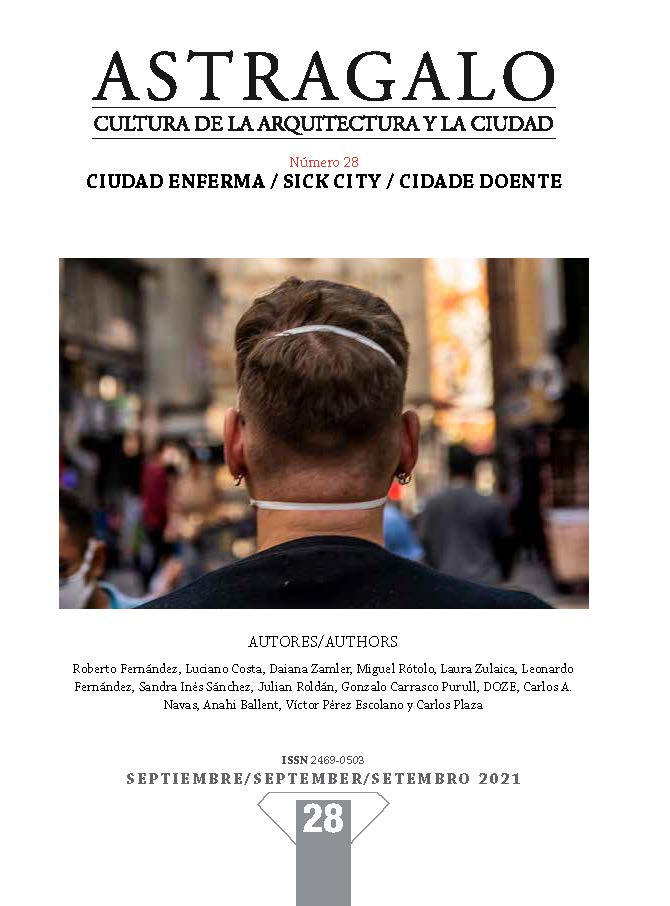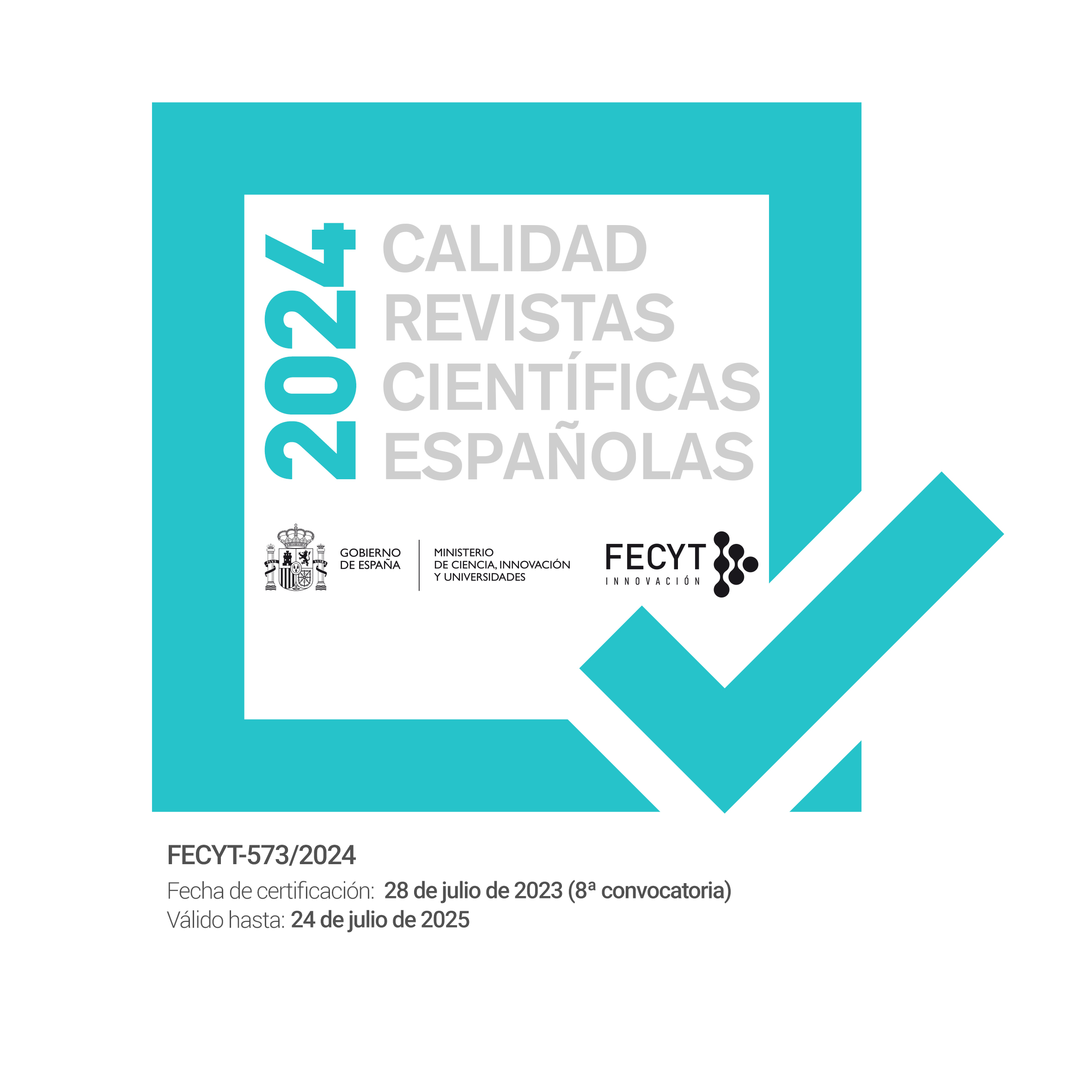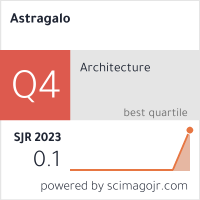Between the romance of public space and the fetishism for pleasure, a necessary demand for the healing of the city emerges.
DOI:
https://doi.org/10.12795/astragalo.2021.i28.03Keywords:
public spaces, fetish, pandemic, mediationAbstract
This paper aims to interrogate the romantic and fetish ideas related to urban public spaces since the eighties. For this purpose, such ideologies are related to Lefebverian postulates regarding an architecture of enjoyment and Koolhaanian legacy about the generic city. Both of them framed by the effects of globalization linked to architecture and urban planning. In turn, it pretends to question those relationships with the emerging lessons of the global pandemic related to city life, focusing on public space’s role.
It assumes that the urban disease was spread several decades before the pandemic, thus healing the city it is imminent in the 21st century. This implies to rebuild –or deconstruct- the fetishist paradigm of postmodern cities and their public spaces. Hence, it will be necessary, on the one hand, to conceive spatial designs which will satisfy common and real demands based on the experience of daily life. On the other hand, those designs have to face the contingencies the pandemic could reveal. Therefore, such demands require to reflect about the architect’s role, not as a romantic designer, but as mediator between the project, the needs and the technique, oriented towards the common good.
Downloads
Metrics
References
Alcalá, L. y Ledesma, E. “Espacios públicos que integran o excluyen, caracterización de las plazas y parques de un área urbana deficitaria crítica. Ciudades Vulnerables. Proyecto o incertidumbre”. Ponencia PDF llevada a cabo en el XIX Congreso del XXXIV Encuentro Arquisur, Facultad de Arquitectura y Urbanismo, Universidad Nacional de La Plata, La Plata, Argentina. Septiembre, 16-18, 2015. https://repositorio.unne.edu.ar/xmlui/handle/123456789/27646?show=full
Belil, M.; Borja, J. y Corti, M. (Eds.). Ciudades una ecuación imposible. Buenos Aires: Café de las Ciudades. 2012.
Borja, J. y Muxí, Z. El espacio público, ciudad y ciudadanía. [PDF], Barcelona: S/E. 2000.
Fainstein, S., S. “Planificación, Justicia y Ciudad”. Urban. 06 (2013): 7-20. http://polired.upm.es/index.php/urban/article/view/2050
Frediani, A. y Hansen, J. “Introduction”. En A. Frediani y J. Hansen, The capability approach in development planning and urban design. Londres: Development Planning Unit. 2015: 3-10.
Gorelik, A. “El romance del espacio público”. Alteridades. 18, 36 (2008): 33-45. https://alteridades.izt.uam.mx/index.php/Alte/article/view/196
Hansen, J. “Locating capabilities in the built environment: socio-spatial products and processes and the capability approach” [2013]. En A. Frediani y J. Hansen. The capability approach in development planning and urban design. Londres: Development Planning Unit. 2015: 77-98.
Koolhaas, R. “Generic city [La ciudad genérica]”. 010 Publishers. (1995): 1247-1264.
Lefebvre, H. El derecho a la ciudad. Barcelona: Ediciones Península. [1968] 1978.
Lefebvre, H. Hacia una arquitectura del placer. [I. Martínez Lorea, ed.] Madrid: Centro de Investigaciones Sociológicas. [1973] 2018.
Madanipour, A. “Why are the design and development of public spaces significant for cities?”. Environment and Planning B: Planning and Design. 26 (1999): 879-891.
Municipalidad de Rosario. Plan Urbano Rosario 2007 - 2017. Rosario: Secretaría de Planeamiento. 2008.
Salcedo Hansen, R. “El espacio público en el debate actual: Una reflexión crítica sobre el urbanismo post-moderno”. Eure. 28, 84 (2002): 5-19. https://scielo.conicyt.cl/scielo.php?pid=S0250-71612002008400001&script=sci_arttext&tlng=en
Sec. de Ambiente y Espacio Público. Plan Ambiental Rosario. Rosario: Municipalidad de Rosario. 2016.
Segovia, O. (ed.) Espacios públicos y construcción social. Hacia un ejercicio de ciudadanía. Santiago de Chile: Ediciones SUR. 2007.
Sennet, R. Construir y habitar. Ética para la ciudad. Barcelona: Anagrama. 2019 [2018].
Valera, S. y Pol, E. “El concepto de identidad social urbana una aproximación entre la psicología social y la psicología ambiental”. Anuario de psicología. 62 (1994): 5-24. http://www.ub.edu/escult/editions/0identidad.pdf
Valera, S. “La identidad social urbana como instrumento para mejorar el bienestar humano”. En D. Sánchez González y L. Domínguez Moreno. Identidad y espacio público. Ampliando ámbitos y prácticas. Barcelona: Gedisa. 2014: 97-119.
Vera, P. “Procesos de recualificación urbana e imaginarios de la innovación. El caso Rosario, Argentina”. Eure. 43, 129 (2017): 209-234. http://www.eure.cl/index.php/eure/article/view/1582
Vidal Moranta, T. y Pol Urrútia, E. “La apropiación del espacio: una propuesta teórica para comprender la vinculación entre las personas y los lugares”. Anuario de Psicología. 36, 3 (2005): 281-297. https://www.raco.cat/index.php/AnuarioPsicologia/article/view/61819
Zamler, D. “Interpretación de formas de apego y concepciones proyectuales en espacios públicos recreativos de Rosario (2000-2020)”. Anuario CAEAU, 2020: en prensa.
Downloads
Published
How to Cite
Issue
Section
License
Copyright (c) 2021 Daiana Zamler

This work is licensed under a Creative Commons Attribution-NonCommercial-ShareAlike 4.0 International License.
Accepted 2021-08-16
Published 2021-09-24
- Abstract 529
- PDF (Español (España)) 0



















